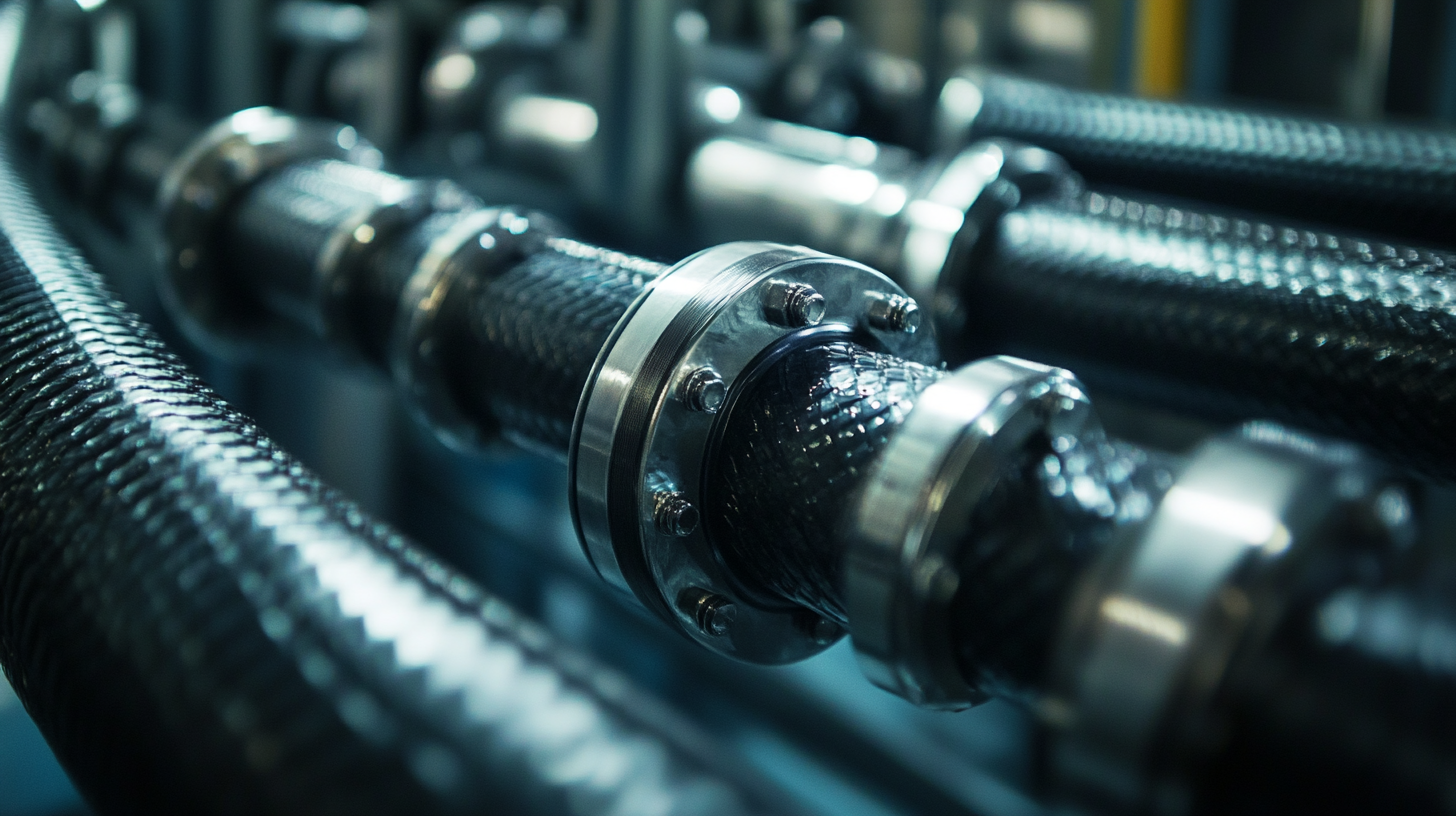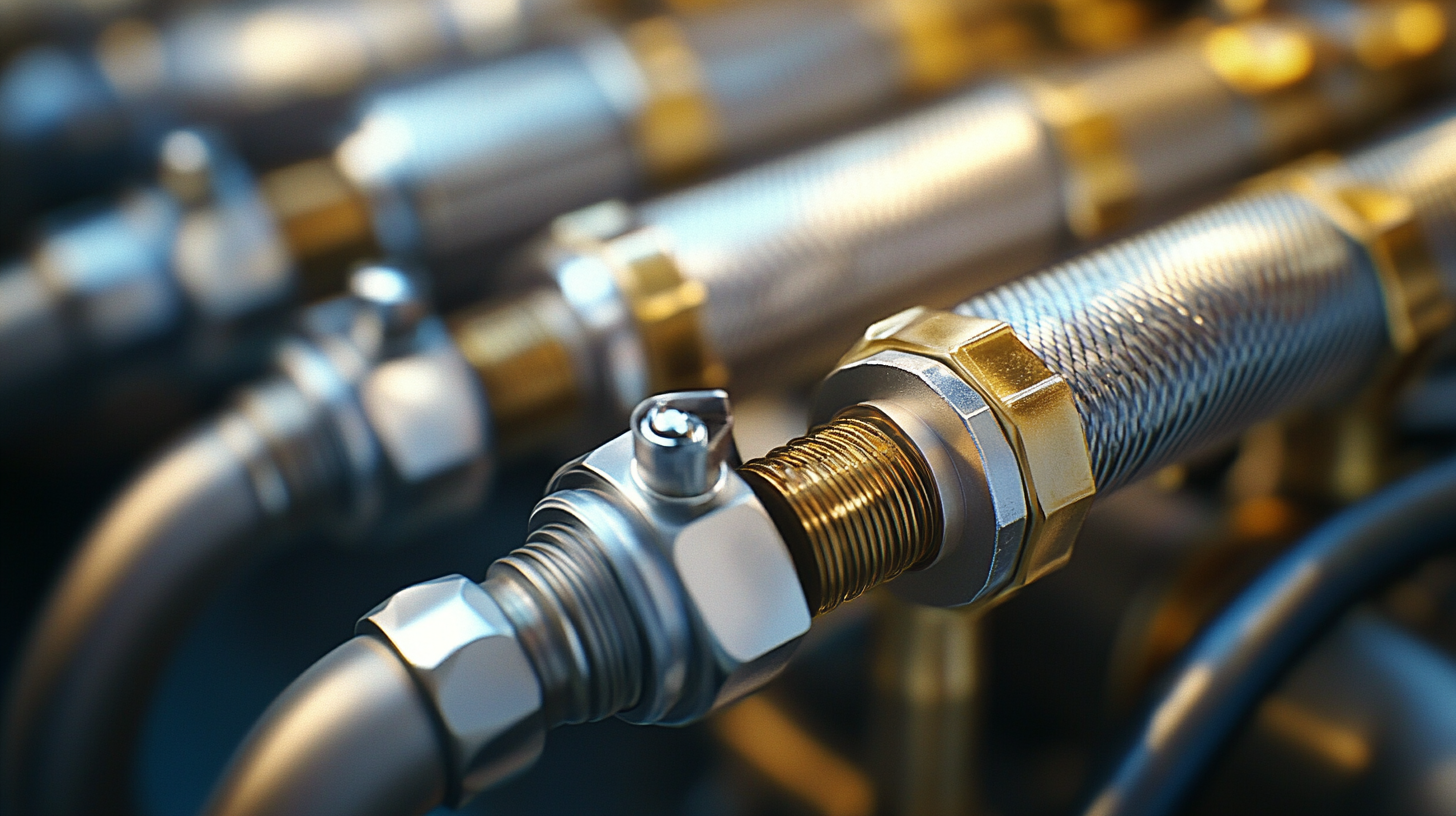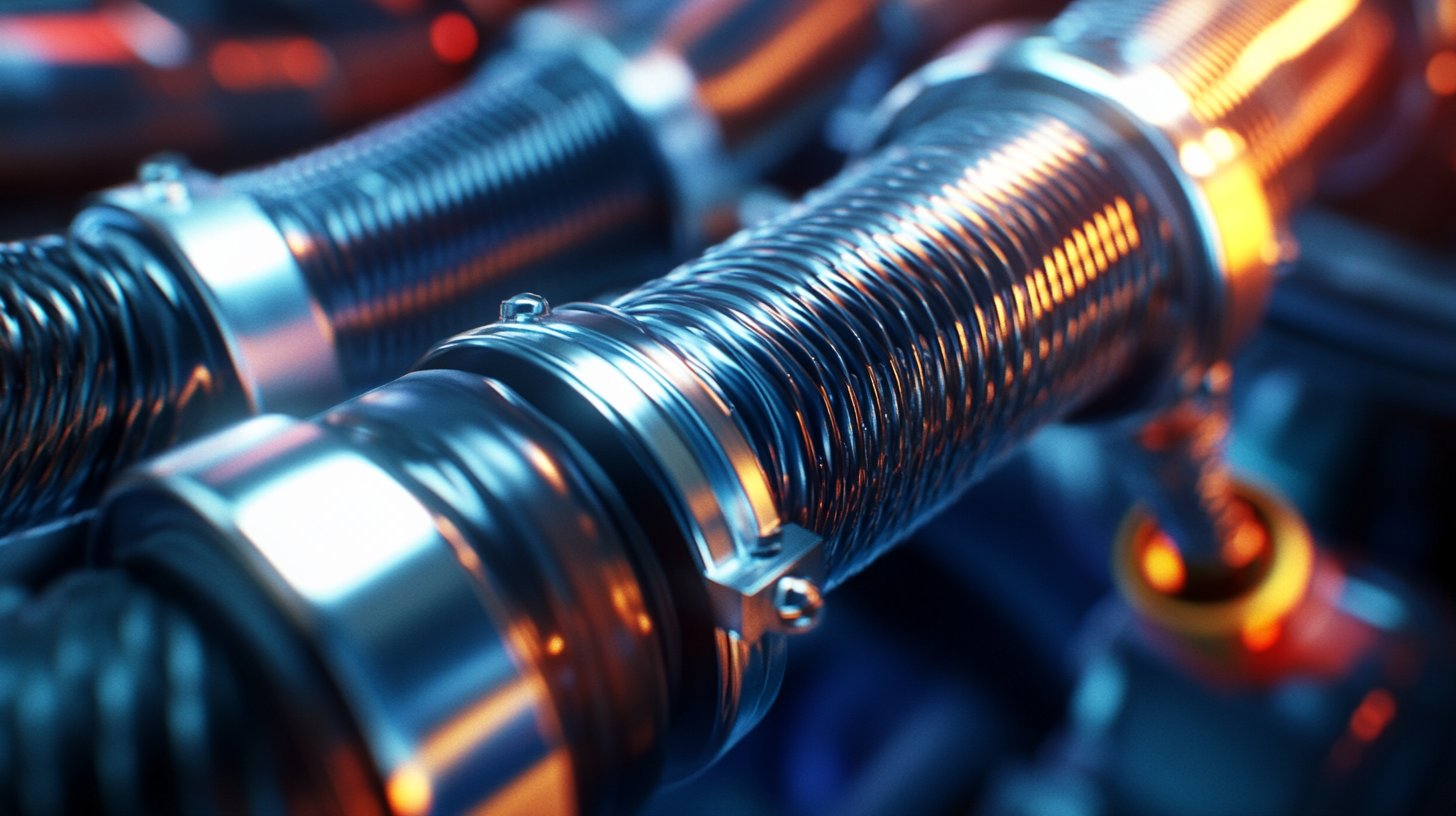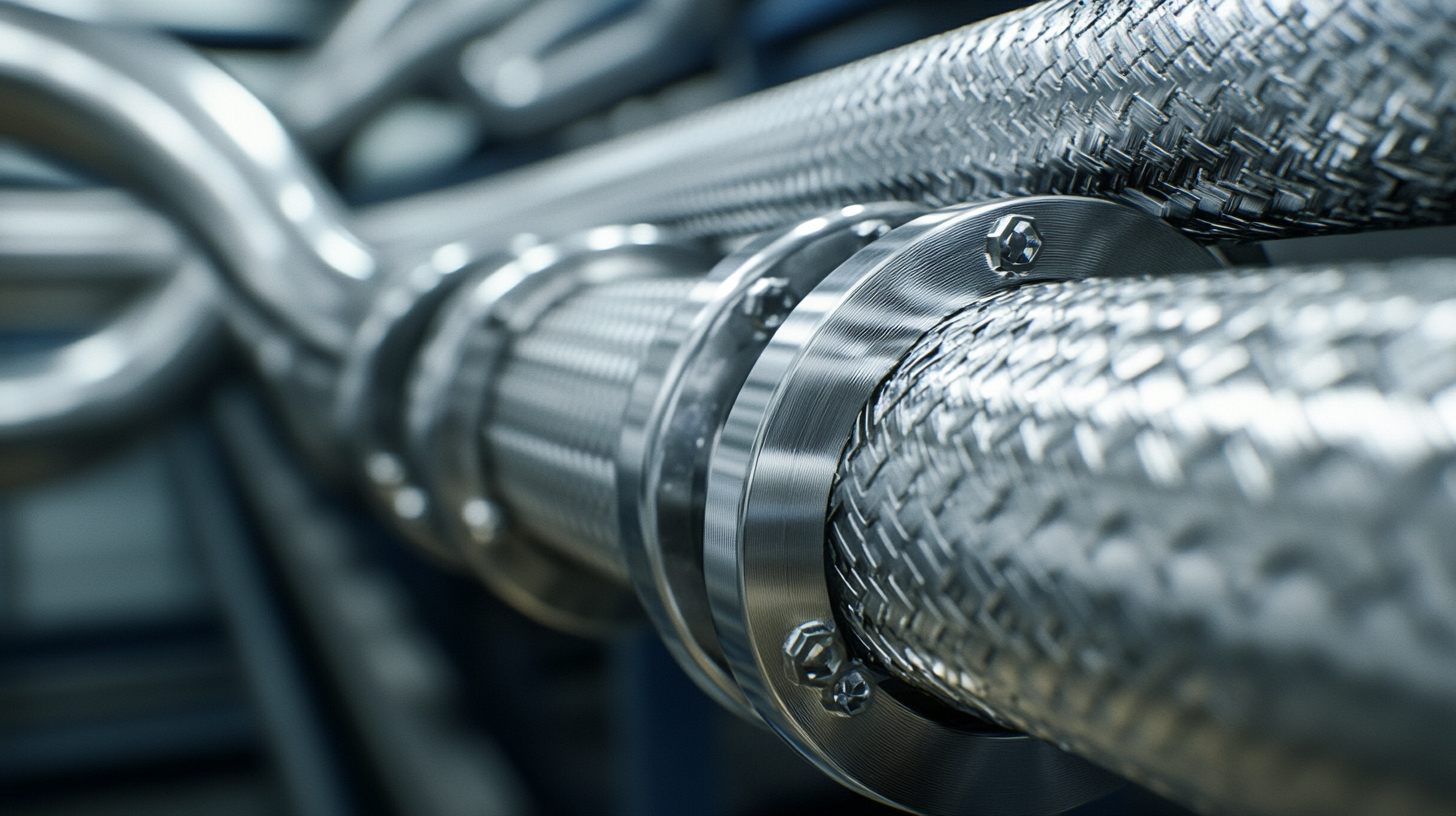Empowering Engineering Excellence: Innovate, Elevate, Deliver.
In the ever-evolving landscape of industrial applications, the performance and reliability of hose and fittings have become paramount. According to a report by Grand View Research, the global hydraulic hoses market size was valued at USD 1.4 billion in 2021 and is projected to expand at a CAGR of 5.3% from 2022 to 2030. This significant growth underscores the increasing demand for durable and innovative solutions in hose and fittings, which play a critical role in sectors ranging from construction to agriculture and manufacturing. The emphasis on quality and performance in these components can directly influence operational efficiency and safety.
Moreover, advancements in materials technology and manufacturing processes have paved the way for innovative designs that enhance the performance of hose and fittings. Research by Technavio indicates that the global hose and fittings market is expected to grow by USD 4.28 billion between 2021 and 2025, driven by the need for high-performance solutions that can withstand extreme conditions. As industries seek to improve productivity and reduce maintenance costs, exploring these innovative approaches becomes essential. This blog will delve into the latest trends and technologies in hose and fittings, highlighting how they contribute to enhanced performance in various applications.

Emerging technologies in hose manufacturing are revolutionizing the industry, leading to superior durability and performance. As manufacturers strive to meet the increasing demands for higher pressure and temperature ratings, innovative materials have taken center stage. For instance, advancements in synthetic polymers and composite materials are minimizing wear and tear while offering resistance to chemicals and environmental stressors. These breakthroughs not only enhance the lifespan of hoses but also improve their functionality in challenging conditions. Additionally, automated manufacturing processes are playing a crucial role in the production of hoses. By incorporating robotics and precision engineering, manufacturers can achieve tighter tolerances and consistency in every product. This level of precision ensures that hoses can withstand rigorous testing and maintain their integrity over time. Furthermore, the integration of smart technology into hose systems presents new opportunities for monitoring performance and detecting potential failures. This proactive approach can save time and costs by preventing unexpected breakdowns in critical applications. Ultimately, the combination of innovative materials and advanced manufacturing techniques is setting a new standard for hose and fittings. Companies that embrace these technologies are not only enhancing their product offerings but also contributing to a more sustainable future by reducing waste and improving resource efficiency. As the industry evolves, the focus on durability and performance will continue to drive the development of next-generation hose solutions.

In the world of fluid transfer systems, innovation is key to enhancing performance and efficiency. The latest development in fitting designs showcases how technology can streamline processes and address the challenges faced in various industries. With a focus on maximizing fluid transfer efficiency, new fittings are engineered to minimize turbulence and leakage, allowing for smoother operation and more reliable outcomes.
One of the most notable advancements in this area is the introduction of specialized tubing retainers that significantly improve the connection between hoses and fittings. These innovative designs ensure a consistent and secure fit, reducing the risk of disconnections during fluid transfer. As industries strive for higher precision and reliability, such innovations are crucial in meeting the demands of both manufacturers and end-users.
Additionally, the incorporation of advanced materials and manufacturing techniques in fitting designs contributes to increased durability and resistance to various environmental factors. This not only enhances the lifespan of the components but also promotes safe and efficient fluid handling, crucial in sectors like pharmaceuticals and beyond. By prioritizing performance and efficiency, these revolutionary fittings set new standards, driving the evolution of fluid transfer solutions across multiple applications.

In recent years, the focus on sustainability has permeated every industry, and hose and fitting production is no exception. As manufacturers seek to reduce their environmental footprint, innovative eco-friendly materials and methods are emerging. These advancements not only enhance the performance of hoses and fittings but also significantly decrease their impact on the planet. For instance, companies are increasingly using recycled plastics and biodegradable materials in their production processes, which can significantly reduce waste and energy consumption.
Additionally, the design of hoses and fittings is evolving to prioritize sustainability. Modular designs that allow for easy repair and reuse are becoming more prevalent, reducing the need for entire replacements. These innovations ensure that products can last longer and require fewer resources over their lifecycle. Moreover, energy-efficient production techniques, such as 3D printing, are enabling manufacturers to create lighter and more durable products that use less material and reduce energy costs during production.
By adopting these eco-friendly innovations, the hose and fitting industry is not only meeting the demands of environmentally conscious consumers but also paving the way for a more sustainable future. As these practices become the standard, the industry can expect a significant transformation, offering enhanced performance while contributing positively to the environment.

In the increasingly competitive landscape of industrial applications, the reliability of hoses and fittings has become paramount. Advanced testing methods play a crucial role in ensuring that these components meet stringent performance standards. By employing state-of-the-art technologies, manufacturers can simulate real-world conditions to rigorously evaluate the durability and functionality of their products. These methods not only identify potential failures before they occur but also provide valuable insights into the lifespan and overall performance of hoses and fittings.
One innovative approach involves the use of automated testing systems that can perform pressure and temperature cycling. This technique mimics the stresses that hoses and fittings experience during actual operation, allowing engineers to pinpoint weaknesses and improve design efficiency. Moreover, integrating real-time monitoring systems can provide ongoing data, enabling manufacturers to make timely adjustments in their production processes. Such proactive analysis ensures that only the most reliable hoses and fittings reach the market.
Additionally, advancements in material science have led to the development of specialized polymers and composites that can be tested for resistance to environmental factors like UV exposure, chemicals, and abrasion. Enhanced testing methods allow for precise evaluations of these materials, ensuring compatibility and performance integrity under diverse conditions. As industries continue to evolve, these innovative testing approaches will be vital in delivering hose and fitting solutions that not only meet but exceed performance expectations, ultimately driving efficiency and safety in various applications.
The demand for customized hose and fitting solutions has surged in recent years, driven by the need for enhanced performance across various industries. According to recent market reports, the global pipe fittings market is projected to reach $99.50 billion by 2025, growing at a CAGR of 5.4%. This growth reflects a broader trend toward customization, as businesses seek tailored products that meet their specific operational requirements.
Customization trends indicate that manufacturers are increasingly focusing on developing hoses and fittings that can be configured to match the unique needs of their clients. This approach not only improves efficiency but also enhances safety and reliability in critical applications. For instance, industries such as oil and gas, chemicals, and food processing demand components that can withstand extreme conditions and provide seamless integration with existing systems.
Furthermore, advancements in materials science enable manufacturers to offer innovative solutions, such as lightweight yet durable hoses that can handle high pressure without compromising flexibility. By leveraging technologies like 3D printing and advanced polymer formulations, companies are producing bespoke fittings and hoses that enhance system performance while reducing lead times. As the trend of customization continues to evolve, businesses that invest in tailored solutions are likely to gain a competitive edge in the marketplace.